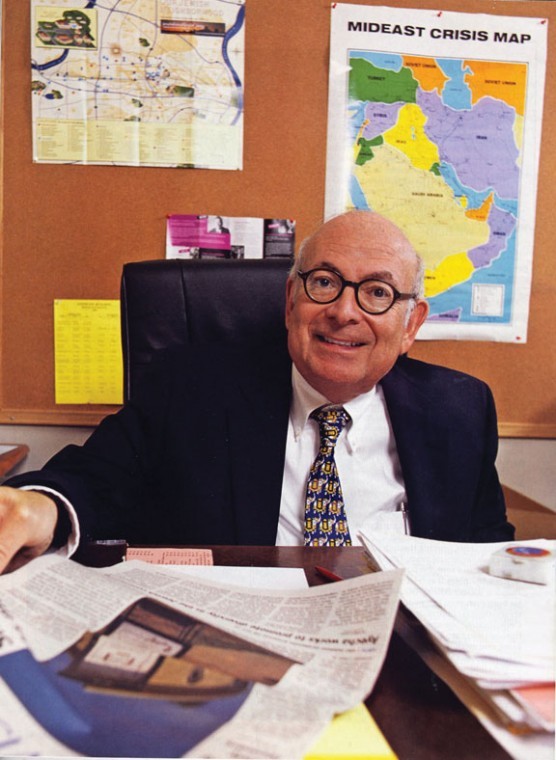Cohnipedia: If statues could talk
Published August 24, 2011
While the Second Commandment prohibiting the making of “graven images” may have inhibited some Jewish artists in the past, it didn’t deter the late sculptor William Zorach, whose distinctive “massive and compact” style attracted critical acclaim.
Turns out that one of Zorach’s sculptures is- “The Runner” — located in the midst of the Harry J. Kiener Fountain at Sixth and Market streets in the heart of downtown.
And that’s not all. Not only was the sculptor a Jewish artist, but the model for the “Runner” statue was Rabbi Peter J. Rubinstein, now spiritual leader of the Central Synagogue in New York City. He posed as the lithe young runner when he was a 22-year-old rabbinical student in New York.
ADVERTISEMENT
I first learned of the Jewish connection to the Kiener Fountain’s famous “Runner” in 1977 from Rubinstein’s local rabbinic colleagues. They informed me that Rubinstein, then serving as a rabbi in White Plains, N.Y., was in town for a program and wanted to visit the statue for the first time since he posed for it years before.
I met Rabbi Rubinstein at the Kiener Plaza Fountain, accompanied by longtime Jewish Light photographer David Henschel, who was able to get a nice shot of the rabbi assuming his original pose right in front of the statue.
“So that’s the statue? What a riot! It really brings back some memories,” Rubinstein told me at the time.
He shared with me that in 1964, as a first-year rabbinical student, he posed for the statue in Zorach’s Brooklyn Heights studio. The statue was built with a $200,000 bequest from the estate of St. Louisan Harry J. Kiener, who died in 1960, at age 80. Kiener, a prominent local civic leader and steel company executive, had been a track star in his youth, and had run the half-mile in the 1904 Olympics at the St. Louis World’s Fair in Forest Park. (No, Mr. Kiener himself was not Jewish).
ADVERTISEMENT
Kiener’s will stated that the $200,000 would be used “for the purpose of erecting a monument…to be in the form of a fountain (to) have as its motif ‘athletics’ and include an athletic figure or figures, to provide for the use of colors by night, and to contain an inscription ‘Donated by Harry J. Kiener, Born in City of St. Louis on Feb. 27, 1881.'”
Originally an advisory committee of art authorities recommended a non-figurative design by the late Alexander Calder that “communicated the spirit of athletic movement,” but the design was rejected by the trustees’ law department and executive committee, which concluded it did not conform to the letter of Kiener’s wishes.
That’s when the famous Zorach was commissioned for the gig. A Lithuania-born Jew, Zorach was best- known for his monumental figures, including “The Spirit of the Dance” at Radio City Music Hall in New York and the massive figure of Benjamin Franklin on the U.S. Postal Service Building in Washington, D.C.
Rubinstein recalls that his parents had bought a piece of Zorach’s work at a time when the artist was struggling with the Kiener project. “He was working on some ideas which were just not working, and when he learned that I had been involved in track in high school and college, asked me to pose for him,” he said.
“I would go to his Brooklyn Heights studio every week for months, and would pose for him,” Rubinstein told me. “He was a very warm, patient artist, who was very proud of his Jewish background.”
He also remembered with a smile that while he was the model for the body of the statue, Zorach used his nephew as the model for the head and added some original elements to the face, which actually resembled that of Rubinstein as well as the artist’s nephew.
Rubinstein was not paid for his modeling, but received an autographed sketch of the statue from Zorach. Until his 1977 visit to St. Louis, Rubinstein had only seen a small model of the statue and had expected it to be in “some obscure park” in St. Louis. He was stunned and pleased at its prominent place in downtown St. Louis and amused by its popularity as a photo-op background.
Contacted recently by telephone at the Central Synagogue in New York City, Rubinstein, now 67, recalled that he and his wife had visited the statue about a year ago when they were in St. Louis. “I have gained a few pounds since my rabbinical school days, but I still enjoy running,” he told me. He noted that “The Runner” was one of Zorach’s last works before he died, and that he still has fond memories of his sessions posing for the work at Zorach’s studio.
Rubinstein says he is pleased that the body of him as a young man has been immortalized in bronze by one of the truly great modern sculptors. And while his statue might not have the timeless uniqueness of the classic Carl Milles’ “Meeting of the Water” across from Union Station (which also has a Jewish connection, to be discussed in a future Cohnipedia), it has become among the most photographed statue in St. Louis since it is directly in view of the Old Courthouse and the Gateway Arch.















